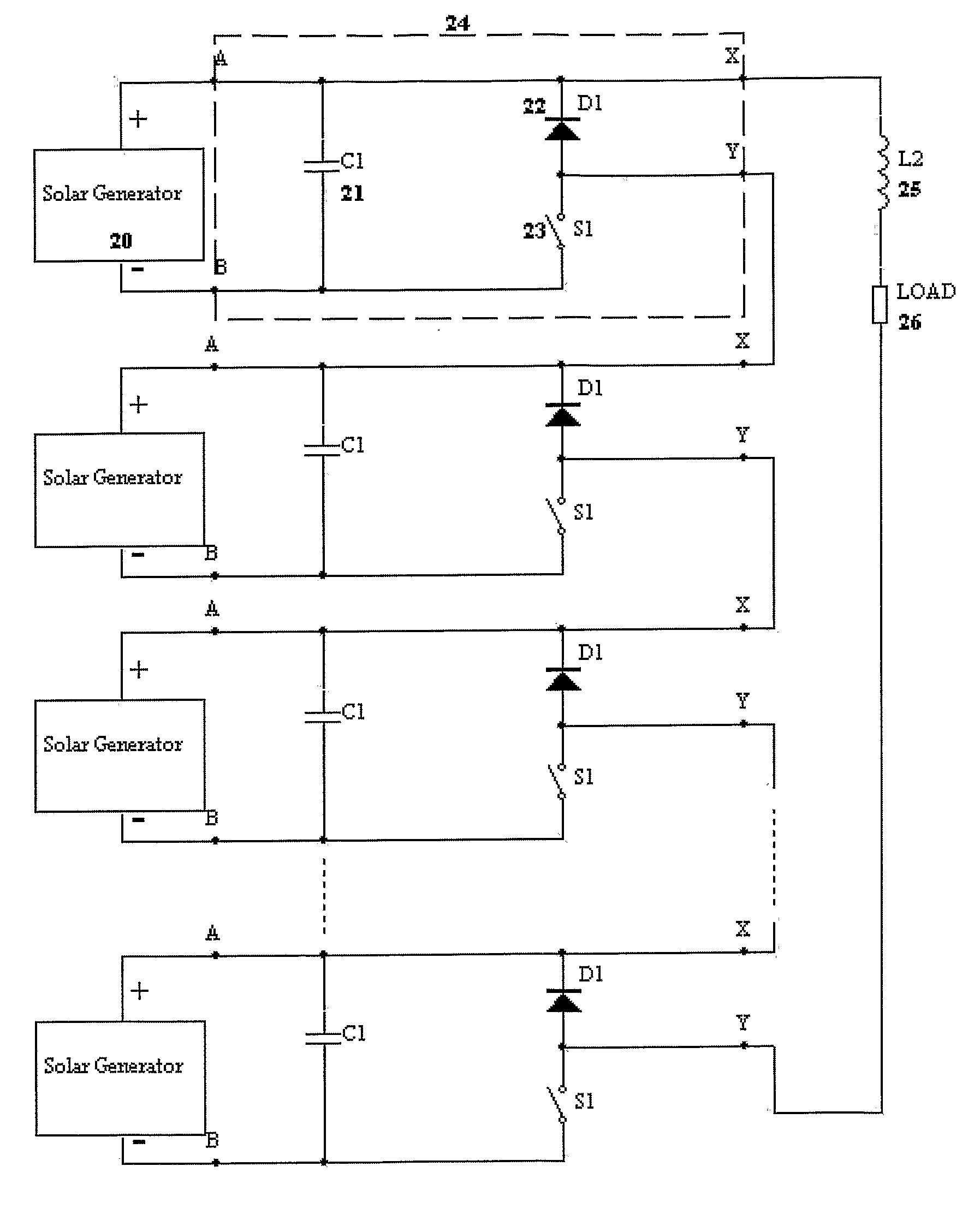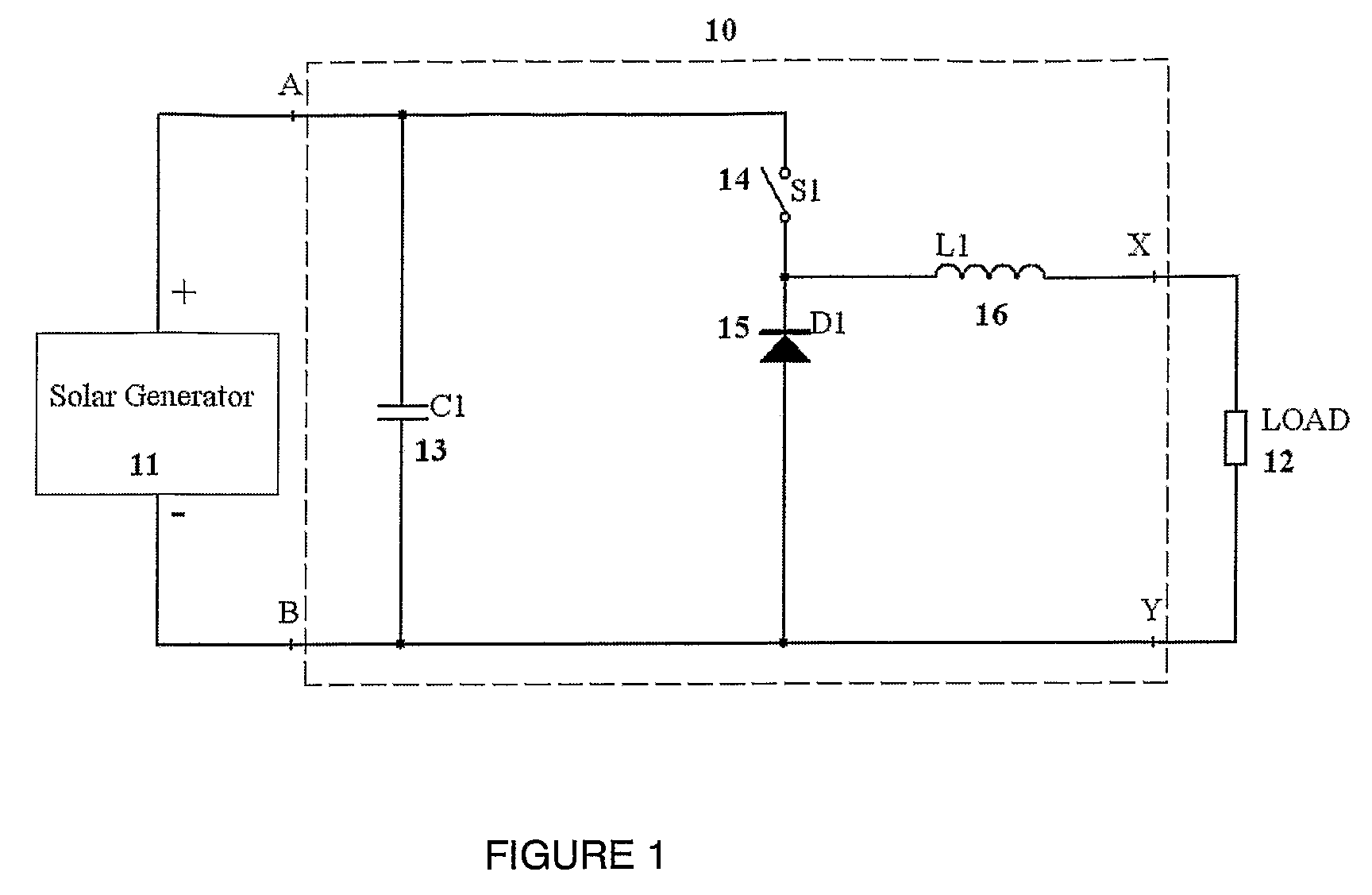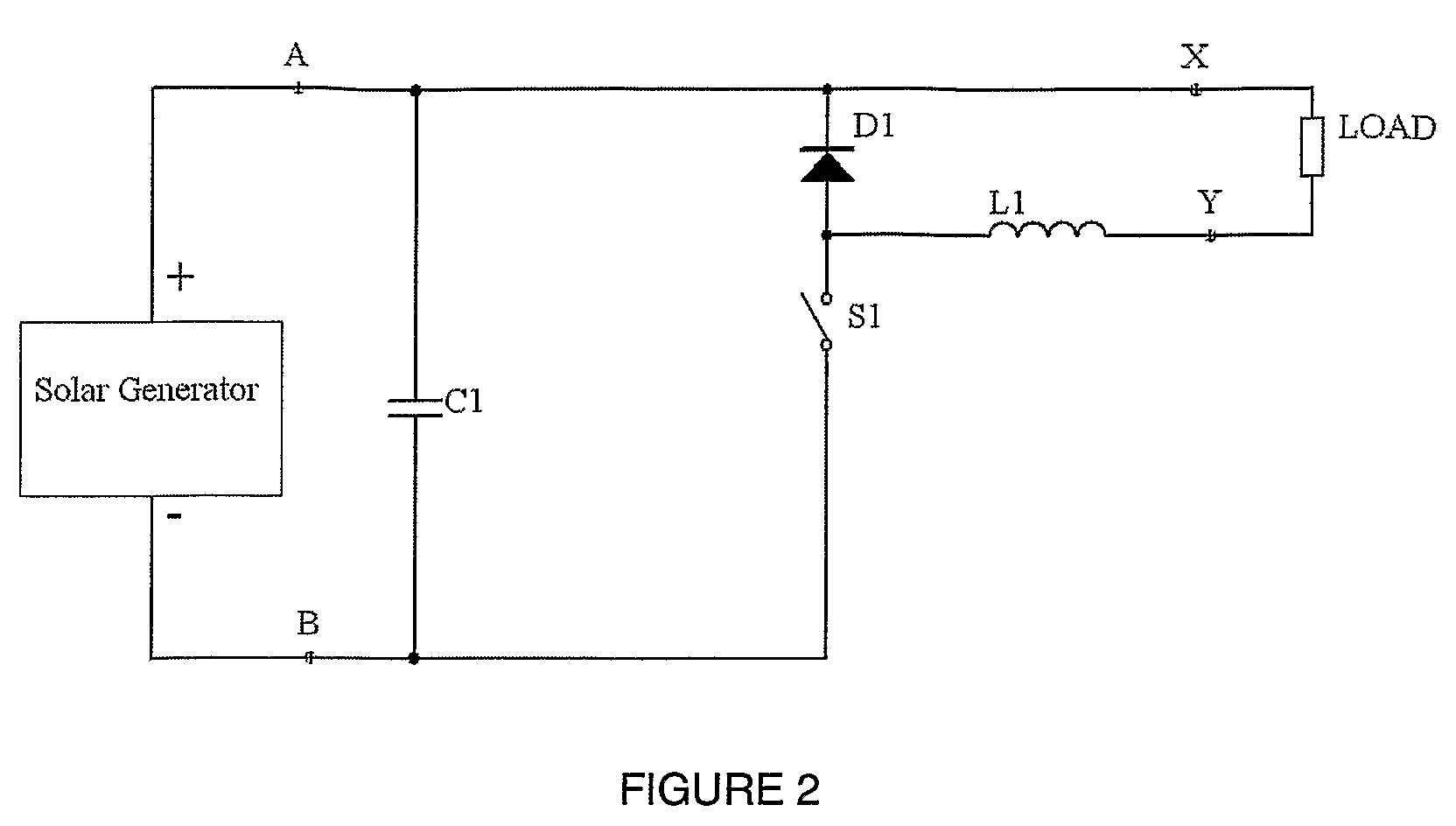Device For Distributed Maximum Power Tracking For Solar Arrays
a solar array and maximum power technology, applied in the field of solar cell technology, can solve the problems of limited surface area, failure to collect all the available electrical power from solar cells, and cells in an array may be subjected to variable light levels
- Summary
- Abstract
- Description
- Claims
- Application Information
AI Technical Summary
Benefits of technology
Problems solved by technology
Method used
Image
Examples
Embodiment Construction
[0036]With reference to FIG. 1 there is shown a simplified buck type DC / DC converter 10 connected to a solar generator 11 and load 12. The solar generator 11 can be a solar cell or several cells. The buck type DC / DC converter 10 includes a capacitor 13 which serves as an energy storage element, a controlled switching device 14, a diode or a controlled device acting as a synchronous rectifier 15 and an output inductor 16. An alternative arrangement for the buck type DC / DC converter 10 is shown in FIG. 2.
[0037]A buck type DC / DC converter can be controlled to operate the solar generator at its maximum power point while producing an adjustable level of output current. The solar generator and maximum power tracker will be referred to as a solar generator / MPPT. Many solar generators / MPPT can be series connected. Each DC / DC converter will then have an identical output current but they can be individually controlled to allow each solar generator to operate at their maximum power point.
[0038...
PUM
 Login to View More
Login to View More Abstract
Description
Claims
Application Information
 Login to View More
Login to View More - R&D
- Intellectual Property
- Life Sciences
- Materials
- Tech Scout
- Unparalleled Data Quality
- Higher Quality Content
- 60% Fewer Hallucinations
Browse by: Latest US Patents, China's latest patents, Technical Efficacy Thesaurus, Application Domain, Technology Topic, Popular Technical Reports.
© 2025 PatSnap. All rights reserved.Legal|Privacy policy|Modern Slavery Act Transparency Statement|Sitemap|About US| Contact US: help@patsnap.com



